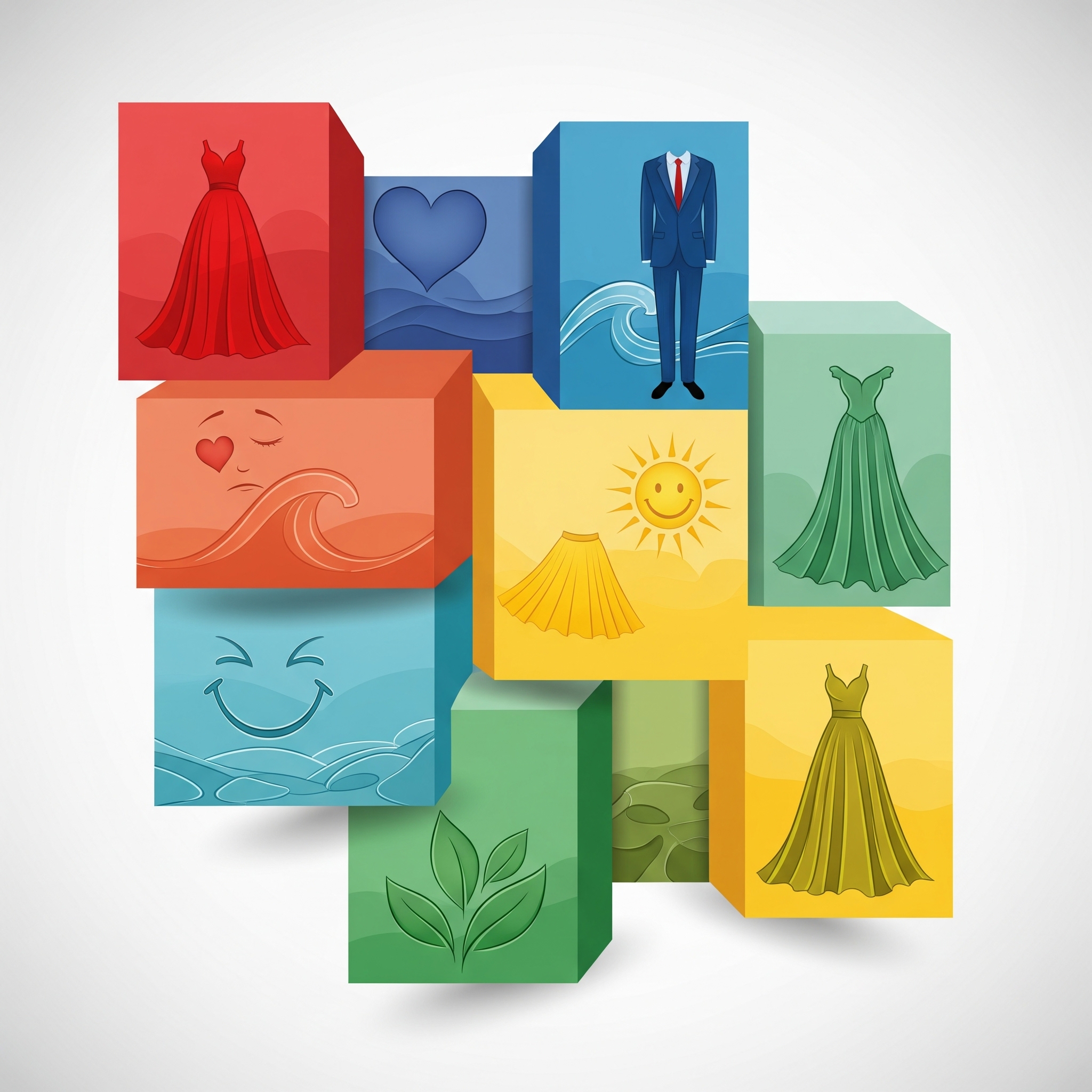
Color is a powerful visual language that profoundly impacts our mood, emotions, and how others perceive us. In fashion, the colors we choose to wear can communicate a wide range of messages, from confidence and authority to approachability and creativity. Understanding the psychology of color can be a valuable tool in curating a wardrobe that not only looks good but also aligns with how you want to feel and be seen.
The Basic Principles of Color Psychology:
Different colors are often associated with specific feelings and traits, although these associations can sometimes vary based on cultural context and personal experiences. Here’s a look at some common color associations in Western cultures:
- Red: Often associated with energy, passion, excitement, courage, and assertiveness. It can also signify anger or danger. In fashion, red can make a bold statement and command attention.
- Blue: Commonly linked to calmness, stability, trust, intelligence, and serenity. It’s often seen as a reliable and professional color, making it a popular choice for business attire.
- Yellow: Associated with happiness, optimism, creativity, energy, and intellect. It’s a cheerful and attention-grabbing color that can evoke feelings of warmth and joy.
- Green: Often connected to nature, growth, health, tranquility, and renewal. It can also symbolize wealth and stability. Green is a versatile color that can feel both refreshing and sophisticated.
- Orange: Combines the energy of red with the happiness of yellow, often associated with enthusiasm, creativity, warmth, and approachability. It’s a vibrant and playful color.
- Purple: Historically associated with royalty, luxury, and spirituality. It can also evoke feelings of creativity, mystery, and wisdom.
- Pink: Traditionally seen as feminine, gentle, sweet, and nurturing. However, bolder shades of pink can also convey confidence and playfulness.
- Black: Often associated with power, elegance, sophistication, and formality. It can also symbolize mourning or mystery. Black is a classic and versatile color in fashion.
- White: Typically represents purity, innocence, cleanliness, and new beginnings. It can also convey simplicity and sophistication. White is a fresh and versatile neutral.
- Gray: Often seen as neutral, practical, and sophisticated. It can also sometimes be associated with dullness or conservatism. Gray serves as a great backdrop for bolder colors.
- Brown: Linked to earthiness, stability, dependability, and warmth. It’s a natural and approachable color.
How to Use Color Psychology in Your Wardrobe:
- Dress for the Mood You Want to Evoke: Consider how you want to feel when you get dressed. If you’re aiming for confidence and energy, incorporating red or orange accents might be a good choice. If you want to project calm and trustworthiness, blues and greens can be effective.
- Dress for the Impression You Want to Make: Think about the context of where you’re going and who you’ll be interacting with. For a job interview, opting for blues or grays might convey professionalism and competence. For a creative meeting, incorporating yellow or orange could signal innovation and enthusiasm.
- Consider Your Personal Color Palette: While color psychology offers general guidelines, it’s also important to choose colors that flatter your skin tone, hair color, and eye color. Wearing colors that complement your natural features will enhance your overall appearance and boost your confidence.
- Use Color Accents Strategically: You don’t need to wear head-to-toe in a single power color to harness its psychological effects. Incorporating pops of color through accessories like scarves, jewelry, bags, or shoes can be just as impactful. A red scarf with a neutral outfit can add a touch of energy and confidence.
- Experiment with Color Combinations: The way you pair colors can also influence the overall message of your outfit. Monochromatic looks (different shades of the same color) can appear sophisticated and put-together. Contrasting colors can create a bold and dynamic effect.
- Pay Attention to Cultural Context: Color associations can vary across cultures. For example, white is often associated with mourning in some Eastern cultures, while it symbolizes purity in Western cultures. Be mindful of these differences, especially when traveling or interacting with people from different backgrounds.
- Trust Your Intuition: Ultimately, the best colors to wear are the ones that make you feel good. Pay attention to how different colors make you feel and how others react to you when you wear them. Your personal connection to color is just as important as general psychological associations.
- Consider the Occasion: The appropriateness of certain colors can depend on the event or setting. While a bright yellow dress might be perfect for a summer party, it might not be the best choice for a somber occasion.
Integrating Color Psychology into Your Style:
- Building a Professional Wardrobe: Blues, grays, and blacks are often go-to choices for conveying professionalism and authority. Consider adding subtle pops of color like burgundy or deep green for visual interest without being overly loud.
- Creating a Casual and Approachable Look: Warmer colors like yellows, oranges, and lighter blues can create a friendly and approachable vibe. Earthy tones like browns and greens can also convey a sense of comfort and authenticity.
- Making a Bold Statement: If you want to stand out and make a memorable impression, incorporate vibrant colors like red, fuchsia, or electric blue. Balance these bolder shades with neutral pieces to avoid overwhelming the look.
- Enhancing Creativity: Colors like purple, turquoise, and bright yellow are often associated with creativity and individuality. Incorporating these colors into your wardrobe can help express your unique style.
Understanding the psychology of color in fashion is about more than just aesthetics; it’s about consciously using color as a tool for self-expression and communication. By being mindful of the messages that different colors convey, you can curate a wardrobe that empowers you, aligns with your goals, and helps you make the desired impression in various aspects of your life.
